How to create and mix a convincing bass guitar part in software
Get a realistic bassline without a real bassist
Do you want to add bass guitar parts to your tracks but feel held back because you can't play or don't have access to the right gear or musicians?
Fortunately, these days it's possible to create fantastic, realistic sounding guitar lines in the box, with no need for real musicians.
In the video above and the tutorial below we'll show you how to create and mix a convincing bass guitar line using software and samples.
To follow the tutorial you'll need the MIDI file and samples we use, which you can get by downloading the Tutorial Files (right click and save as.)
For more on replicating guitars in the box, check out the February issue of Computer Music (issue 187.)
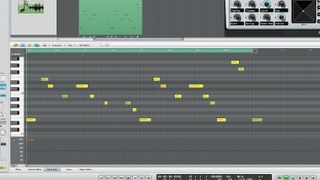
Step 1: We're going to use a basic electric bass guitar patch from Alchemy CM, which is available in the CM Suite of plugins, which comes free with each issue of Computer Music (or a demo version of Alchemy is available to download from the Camel Audio site.) We'll then spice the bass part up with some extra samples, and use some compression and EQ to fit it into a pop/rock mix with drums and other guitars. First, we write the bass guitar line using the Bass»Electric Bass preset in Alchemy. The MIDI file, 1 Bass MIDI.mid, is in the Tutorial Files folder.
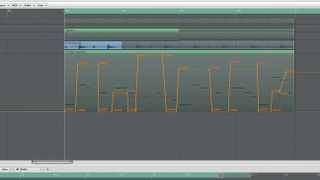
Step 2: The riff doesn't have a lot of expression at the moment, so let's program some in. This Alchemy patch has its X/Y controller assigned to two different sounds: a mute-fingered bass and a slap-pick variation. We use automation in Logic to mix between these two different styles as the riff plays.
Get the MusicRadar Newsletter
Want all the hottest music and gear news, reviews, deals, features and more, direct to your inbox? Sign up here.
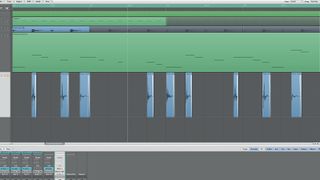
Step 3: Next, we add a further accent to some of the notes by overlaying some pick and scratch sounds from a live bass. We've used some live bass samples (included in the Tutorial Files folder). We chop out just the short pick and click noises from the live bass samples and place them on a new track throughout the riff, in time with the notes. We'll fix the volume levels in a sec.
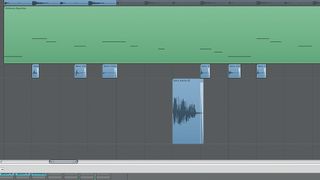
Step 4: We use a couple of single notes from the sampled live phrase to replace two of the Alchemy notes on another new track. Exact timing isn't vitally important here, as a bit of 'human' inaccuracy adds to the realism of the final phrase. We also add a short fade to the end of each of the chopped out notes/sounds to prevent unwanted clicks when the samples end.
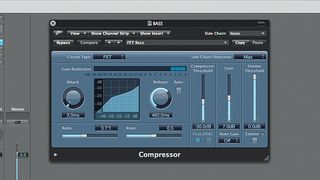
Step 5: We now have three different tracks making up our bassline, but the volume levels are all over the place. To remedy this, we lower the volume of the pick sounds and match the volume of the extra notes as best we can to the Alchemy CM riff. We send all three tracks to a group bus and insert Logic's FET Bass Compressor preset set to a low Threshold of -30dB to help even out the dynamics.
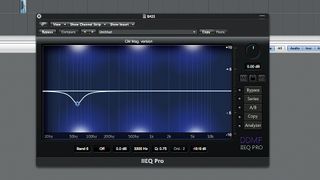
Step 6: After the compressor on the bus channel, we insert an EQ plugin: IIEQ Pro CM, from the CM Plugins. We make some basic adjustments so that our bassline fits with the kick drum and the rest of the track. Using a frequency analyser on the kick track, we find that the dominant frequency there is around 60Hz, so we set a -3dB, 2.00 Q cut on the bassline track to prevent build-up there.
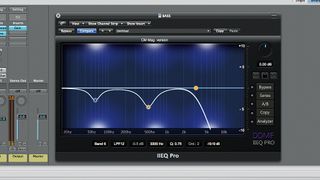
Step 7: This particular bass also has an unwanted peak at around 500Hz, which is making it sound rather buzzy. We cut the EQ there, too, this time to -4.6dB with 1.50 Q. Lastly, we roll off some of the high frequencies with the LPF12 curve set to 3.3kHz and 0.75 Q. This clears some space in the high end for the percussion and other guitars to fit.
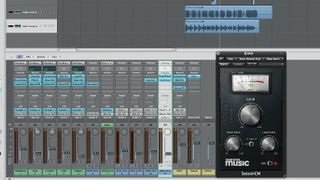
Step 8: Satson CM is added to the bassline bus channel, with the gain at +3.00. This gives us extra warmth and drive. We drop in some triple-tracked guitars a basic strummed guitar we've previously created. We low-cut them at 200Hz, and add Amplifikation CM's Wide Mid Lead preset to the basic strum. Finally, we add the drums back in.
Computer Music magazine is the world’s best selling publication dedicated solely to making great music with your Mac or PC computer. Each issue it brings its lucky readers the best in cutting-edge tutorials, need-to-know, expert software reviews and even all the tools you actually need to make great music today, courtesy of our legendary CM Plugin Suite.













